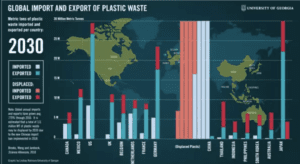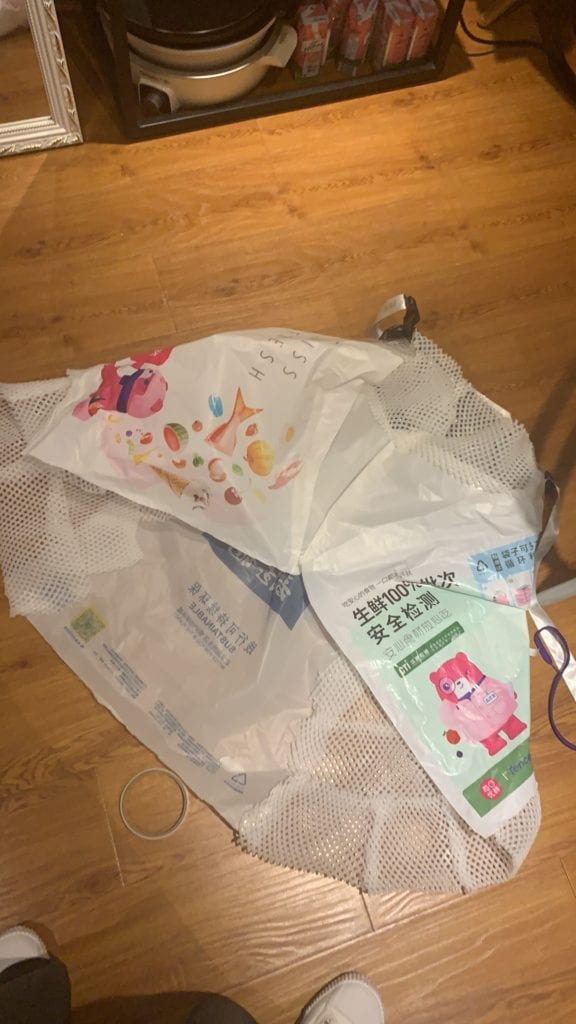The Midterm Project
Research and Inspiration
In June 2018, the University of Georgia published a study based on data from the United Nations that predicted that 110 million tons of plastic waste would be homeless in the world by 2030.
What does it mean to be homeless in international waste?

This is because China, which has been a major importer of plastic waste in the past 20 years, has stopped importing foreign waste for environmental protection since 2018.
In the past 25 years, nearly half of the world’s non-industrial plastic waste has been shipped to China.
From 1996 to 2016, the import and export volume of plastic waste in various countries was grayish and the export was light green. Data after 2016 is an estimate by the University of Georgia scholars based on United Nations data. China is the 7th country on the right.

According to the study published in Science Advances, China imported 7.35 million tons of plastic waste in 2016, accounting for 52% of the total global plastic waste. If you count Hong Kong, China, the figure will reach 72%.
Plastic bottles are food-grade PET, which can actually be used to make polyester fiber, or chemical fiber, PET fiber, polyester, non-woven fabric, and indeed. The China Plastics Association Expert Committee stated that 98% of the plastic bottles in Beijing were recycled and mainly flowed to the textile industry after recycling.

According to the American Chemical Society, plastic bags are generally made of high-density polyethylene (HDPE), low-density polyethylene (LDPE), or linear low-density polyethylene (LLDPE) and cannot be used to make polyester fibers.
These materials are recyclable, but plastic bags are often dirty and difficult to clean and reuse, and can block the line or be blended into other useful recycled materials. It should be known that if the classified recycled materials contain more than 0.5% of impurities, they will not be sold at a good price, so the plastic bags will be rejected by the recycling stations and will eventually be thrown out into garbage that no one wants.
Some experts pointed out that the clothes made from recycled plastic bottles are the source of micro-plastic pollution.

Mark Browne, an ecologist and postdoctoral researcher at the National Center for Ecological Analysis and Synthesis in Santa Barbara, Calif., has studied plastic contamination and microfiber for nearly 10 years. He explained that synthetic fiber garments would lose a lot of plastic fibers when subjected to spin and cycle rinsing in a washing machine. Most washing machines do not have a filter to capture these tiny microfibers, and the sewage treatment plant cannot completely remove these tiny contaminants.
According to a study by the University of California, a city with a population of 100,000 people, about 110 kilograms of microfiber per day through the washing machine
into natural water, is equivalent to throwing away 15,000 plastic bags.
According to a study by the University of California, a city with a population of 100,000 people, about 110 kilograms of microfiber per day through the washing machine into natural water, is equivalent to throwing away 15,000 plastic bags.
My inspirations are from the Chinese super country model who got a hit on Tiktok. He used big plastic bogs to make his own fashional clothes. So I think maybe I could use the plastic bags I could find in my life to make a clock ”in fashion“ by my self
The Process
The Materials I Selected from my life。

Cut the shape.





And make the hat.



Put together plastic sheets.

Here is the final work.

Leave a Reply